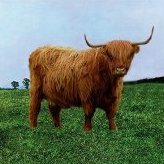If those types get sick going forward, we need to ask if they were drinking raw water.
https://www.cdc.gov/bird-flu/situation-summary/mammals.html
The wide geographic spread of HPAI A(H5N1) viruses in wild birds, poultry, and some other mammals, including in cows, could create additional opportunities for people to be exposed to these viruses. Therefore, there could be an increase in sporadic human infections resulting from bird and animal exposures, even if the risk of these viruses spreading from birds to people has not increased. CDC believes the current risk to the general public from bird flu viruses is low. People who have job-related or recreational exposure to infected birds or animals, including cows, are at greater risk of contracting HPAI A(H5N1) virus. CDC has recommendations related to testing, treatment of HPAI A(H5N1) infection and prevention of exposure to these viruses: Highly Pathogenic Avian Influenza A(H5N1) Virus in Animals: Interim Recommendations for Prevention, Monitoring, and Public Health Investigations.
States with reported human cases
More than 70% of Californias fair cow herds are infected.
https://www.msn.com/en-ca/news/world/more-than-70-percent-of-california-s-dairy-cow-herds-are-infected-with-bird-flu-here-s-what-to-know/ar-AA1wIQfB











